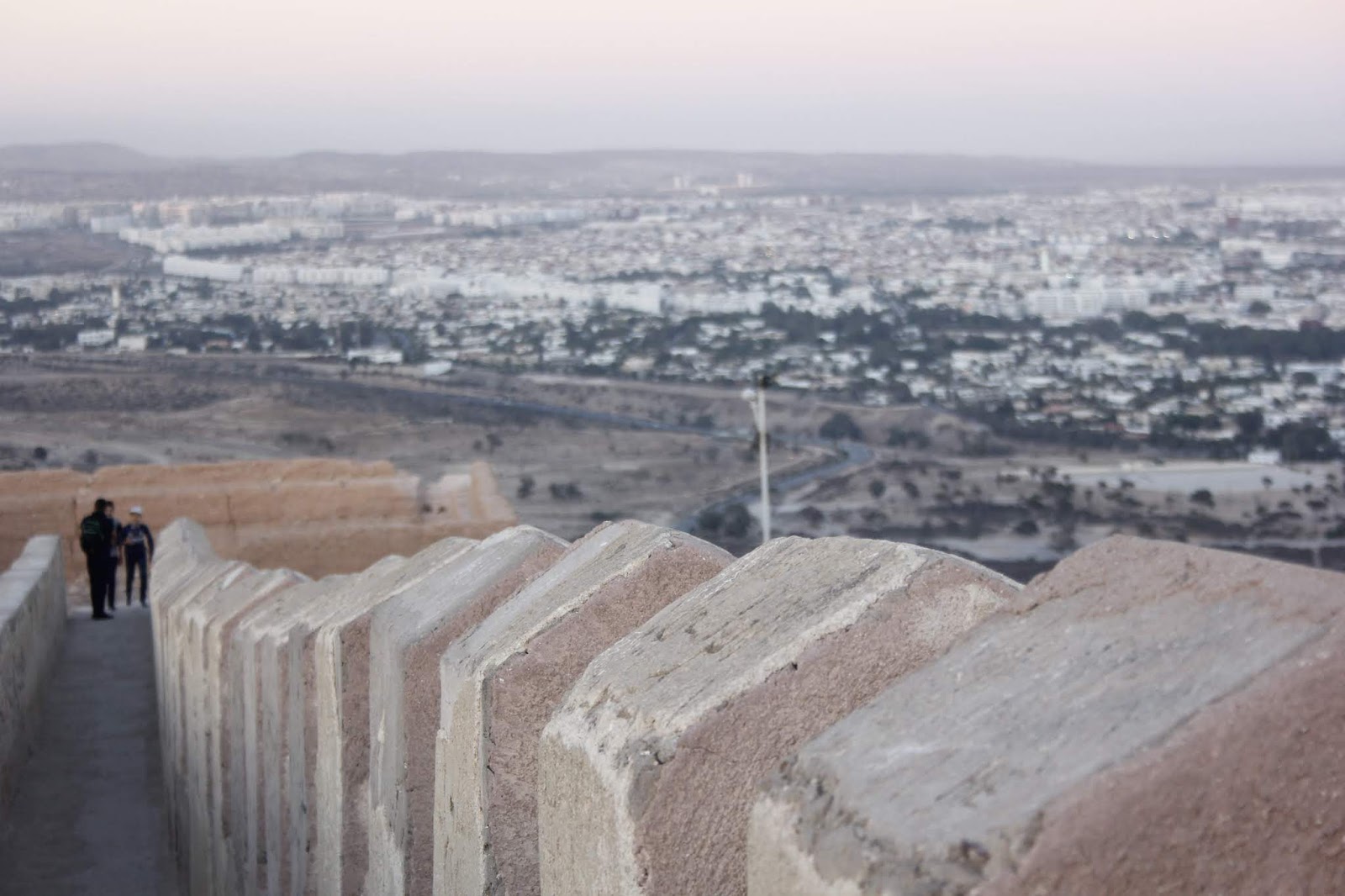THE KASBAH OF AGADIR
AGADIR OUFALA
Dominating the city and the Atlantic Ocean, the Kasbah of Agadir is the city's most beautiful emblem and the first image that marks its visitors... Its famous hill is featured in the background of thousands of postcards and pictures. At dusk, freed from the heat of the sun and just before the city lights up, the Kasbah shrouds itself in mystery ... It is at this ephemeral moment, when centuries of history are blurred by twilight that it seems best to tell its story...
The Kasbah of Agadir, also called Agadir Oufella (the upper town of Agadir, in the Amazigh language)was built in 1540 by King Mohammed Ech-sheikh to protect the city and its port from foreign invasions. Its historical roots go back to the 16th century when the Portuguese arrived in the Bay of Agadir, having already established their presence in other coastal cities of Morocco. In 1505, Captain João Lopes de Sequeira built a small fort of stone and lime at the foot of the hill. The tribes of Souss were quick with their rebuttal. As early as 1511, they launched their first attack against the Portuguese, confining them to their fortress. The isolation and lack of security discouraged João Lopes de Sequeira who surrendered his small fort to Manuell King of Portugal, in 1513. The latter enlarged the port, installed a garrison and subjected the region to Portuguese authority. Named Santa Cruz do Cabo de Aguer, the site became a very active trading post.
 Less than twenty years later, the Portuguese of Santa Cruz had to face new opponents: the Saadians. In 1536, Sultan Moulay Abdallah El Kaim bi-Amri Allah declared war on the invaders. His son Mohamed Sheikh El Mehdi finally seized Agadir. With his sovereignty asserted, the latter built the Kasban in 1540 at the top of the hill, watching Santa Cruz from its towers pierced by fifty cannons. In 1541, the Saadian dynasty reached its goal of completely freeing the bay from Portuguese occupation. This was the beginning of a new era for Agadir.
Less than twenty years later, the Portuguese of Santa Cruz had to face new opponents: the Saadians. In 1536, Sultan Moulay Abdallah El Kaim bi-Amri Allah declared war on the invaders. His son Mohamed Sheikh El Mehdi finally seized Agadir. With his sovereignty asserted, the latter built the Kasban in 1540 at the top of the hill, watching Santa Cruz from its towers pierced by fifty cannons. In 1541, the Saadian dynasty reached its goal of completely freeing the bay from Portuguese occupation. This was the beginning of a new era for Agadir.
In the 17th century, Agadir became a roadstead dedicated to the trade with Europe. In 1731, a first earthquake struck the bay's constructions. During the reconstruction, the Dutch, who held a trading post under the sovereignty of the Saadian Sultan, engraved the words «Vreest God ende een den Kooning» (Fear God and Honor the King) on the Kasbah arch in 1746. The engraving remains visible to this day. Just a few years later, in 1755, the gigantic earthquake of Lisbon reached Morocco, damaging the buildings of Agadir once again...
Around 1760, weary of the rebellions of the Souss tribe the Alawite Sultan Sidi Mohammed Ben Abdallah instigated the decline of Agadir by transferring port activities to Mogador (Essaouira). It was only a century later, around 1882. that the Sultan Moulay Hassan re-launched commercial expeditions from Agadir, reaffirming the region's authority
At the beginning of the 20th century, France was competing with Germany to establish their influence over Morocco. In 1913, after hard negotiations, the French troops settled in Agadir. The Kasbah remained a major observation post and harbored a small town of 400 inhabitants within its walls. Under the French Protectorate, the building was classified as a historic monument for its walls in 1932 before the entire site was classified in 1942. The Kasbah and its inhabitants experienced an unprecedented trauma when Agadir was struck on February 29th 1960 by a terrible earthquake. The noble fortress, once feared by its attackers, had succumbed to Mother Nature's power... Only a part of the ramparts still remain today...
Today, from its height of 236 meters, the Kasbah of Agadir Oufella seems to meditate on its own history. Every day, many visitors come to embrace the breathtaking view of the city, the bay and the foothills of the Atlas ... The hillside features the national motto of Morocco " God, the Homeland, the King " which is illuminated at night, giving the monument a Magical Aura.
Subscribe by Email
Follow Updates Articles from This Blog via Email






No Comments